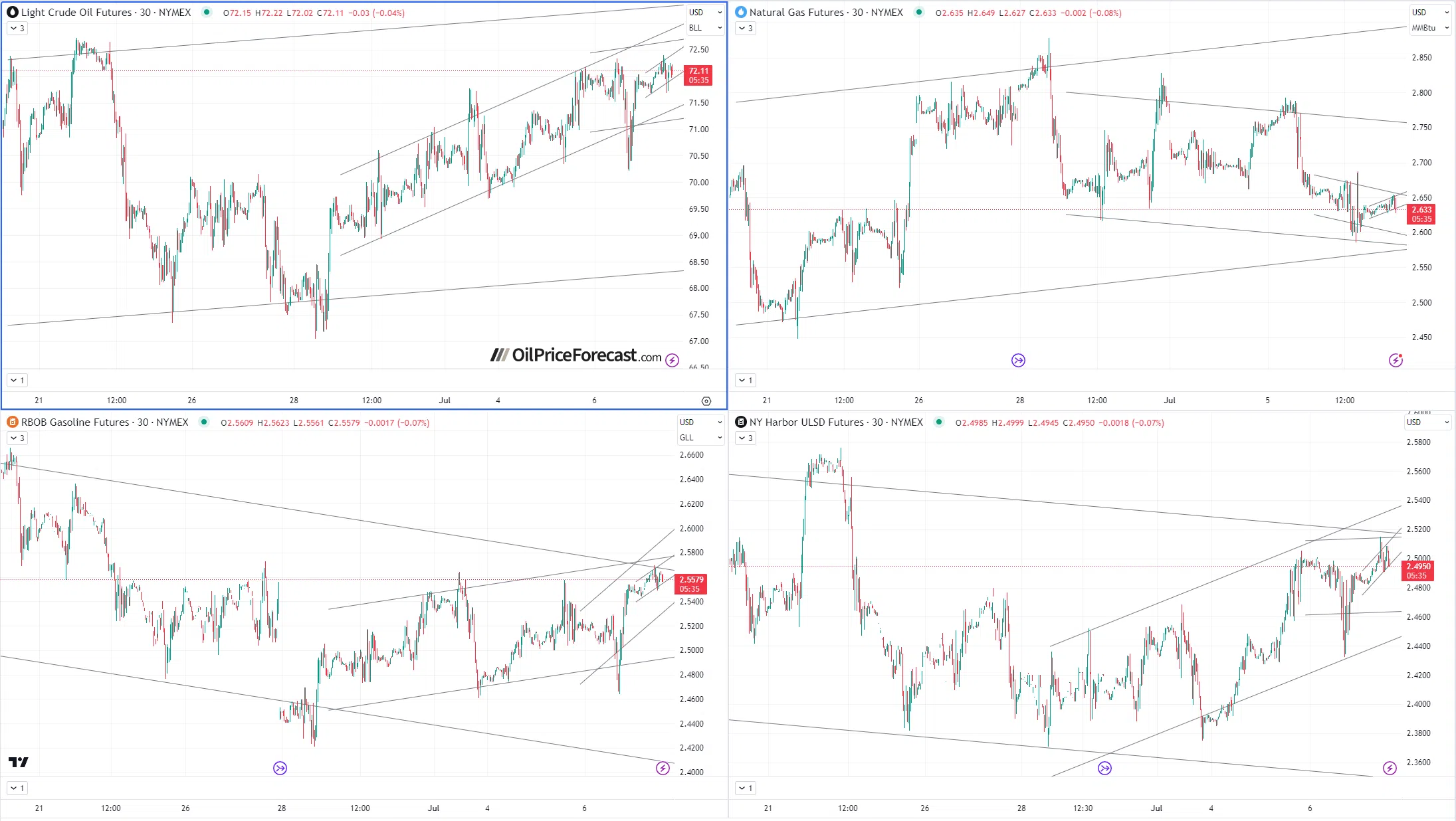Written by: Sebastien Bischeri
The oil market grapples with economic uncertainties, supply cuts, and demand concerns, leading to ranging prices.
Economic Concerns and Crude Oil Prices
The oil market is currently navigating through a complex landscape marked by economic uncertainties. The fear of a global recession due to aggressive interest rate hikes by major central banks, including the Federal Reserve and the European Central Bank, is causing a slowdown in the oil price rise. These actions, aimed at combating persistently high inflation levels, are expected to impact economic development, with economists predicting a possible recession in the US and the Eurozone in the second half of the year, even though US economic data continues to beat consensus expectations, according to the "Bloomberg US Economic Surprise" index which is at its highest for 2 years:

(Source: Bloomberg)
On the other hand, bankruptcy filings in the United States continue to increase. The monetary policy of very low rates had allowed many “zombie companies” to continue to survive. With rising rates, bankruptcies have become inevitable for many businesses, as shown by the following graph:

(Source: Bloomberg via Apollo)
Supply Cuts and Market Response
Despite the gloomy economic outlook, the oil market has seen some positive signals. Notably, Russia and Saudi Arabia, two of the world's largest oil producers, have announced supply cuts. While this move has led to a modest increase in oil prices, the market is still waiting for tangible evidence of the anticipated global supply deficit to alleviate recession fears.
Demand Concerns and Market Outlook
However, concerns over weakening demand persist. In China, one of the largest oil-demanding regions, the post-Covid recovery seems to be losing steam, with the service sector growing at one of the slowest rates this year. Similarly, in the US and Western Europe, other significant oil-demanding regions, high inflation levels are forcing central banks to further increase interest rates, which could potentially dampen economic activity and, consequently, oil demand.
In conclusion, the oil market is presently experiencing significant volatility within its current range, with economic uncertainties, supply cuts, and demand concerns all playing a role in shaping crude prices.
As we move into the second half of the year, the questions remain: Will the anticipated global supply deficit materialize? How will the potential economic recession impact the global oil demand and, consequently, oil prices?
US Dollar Currency Index (DXY/USDX) & Energy Charts

CFD

Continuous Futures contracts
Flight Map

Related: OPEC's Predictions, Oil Demand Peak, and Energy Consumption

